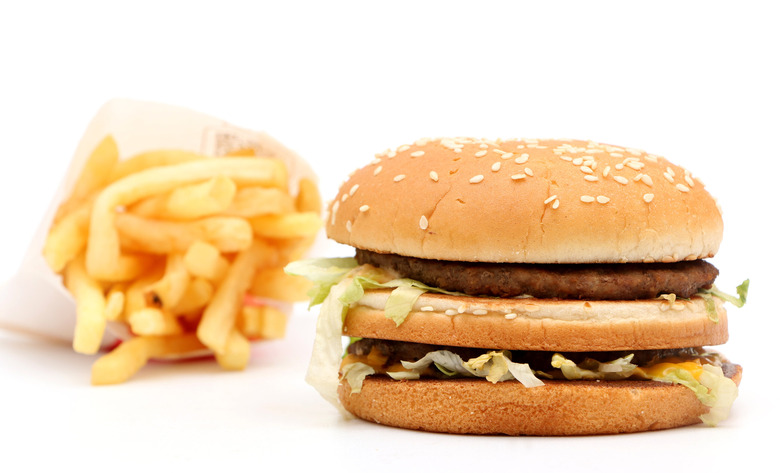Watch: McDonald's Is Testing Siri-Style AI Technology At Drive-Thrus
"Welcome to McDonald's," the Siri-like voice says, greeting a customer in the drive-thru. "We're currently serving a limited menu, so please review the menu before ordering."
The human-like interaction, voiced by an AI interface on the other end of the McDonald's screen, might sound like something from a dystopian future. But it's very much happening now, as customers at several Chicago-area locations of the fast-food giant specify their Mcdonald's order in the drive-thru at 10 Windy City sites. You can check out one user's experience with this technology below, which was posted to TikTok and was the subject of remarks by McDonald's CEO Chris Kempczinski this week at Alliance Bernstein's Strategic Decisions Conference. One big update he shared: At the locations that are using AI order-takers, McDonald's is seeing 85% order accuracy.
Some of you reading that, of course, might snicker a little, since the surly teenager behind the typical fast-food counter doesn't necessarily have the best track record themselves when it comes to the accuracy of orders you place. And yes, the ambition here by McDonald's very much seems to be to stand up technology solutions such as this AI order-taking system in order to eventually save on labor costs — in other words, it might not be long before essentially a robot is asking you through the loudspeaker whether you'd like fries with that. Or informing you that McDonald's ice cream machine is broken.
@divinejules 😳😱This is the most dystopian thing I have ever seen in the 27 years of my life. 2020 is crazy. #2020 #mcdonalds #food #weird #fyp #TikTokRecipe
Kempczinski acknowledged the challenge of training workers to stay back and let the AI do its work, rather than jumping in to try to help the technology correctly interpret customer orders. That's how the technology will improve, such that it can eventually be rolled out on a wider basis over the next couple of years. "Now there's a big leap from going to 10 restaurants in Chicago to 14,000 restaurants across the US, with an infinite number of promo permutations, menu permutations, dialect permutations — and on and on and on," he said during the conference.
An employer like McDonald's that employs low-wage workers to perform tasks like flipping hamburgers might not sound like the ideal environment where innovation and technology can flourish. But as this AI technology shows, the ubiquitous fast food with the familiar golden arches outside is leaning way into technology like this, partly to lower costs.
Kempczinski, for example, added that McDonald's also wants to do this same kind of thing in the kitchen, by automating some of its equipment like fryers and grills — which makes sense when you think about the volume of burgers and fries it produces for customers each day. However, that technology isn't quite as far along, according to the CEO, and won't be in wide use at the chain for at least several more years.
Related coverage:
